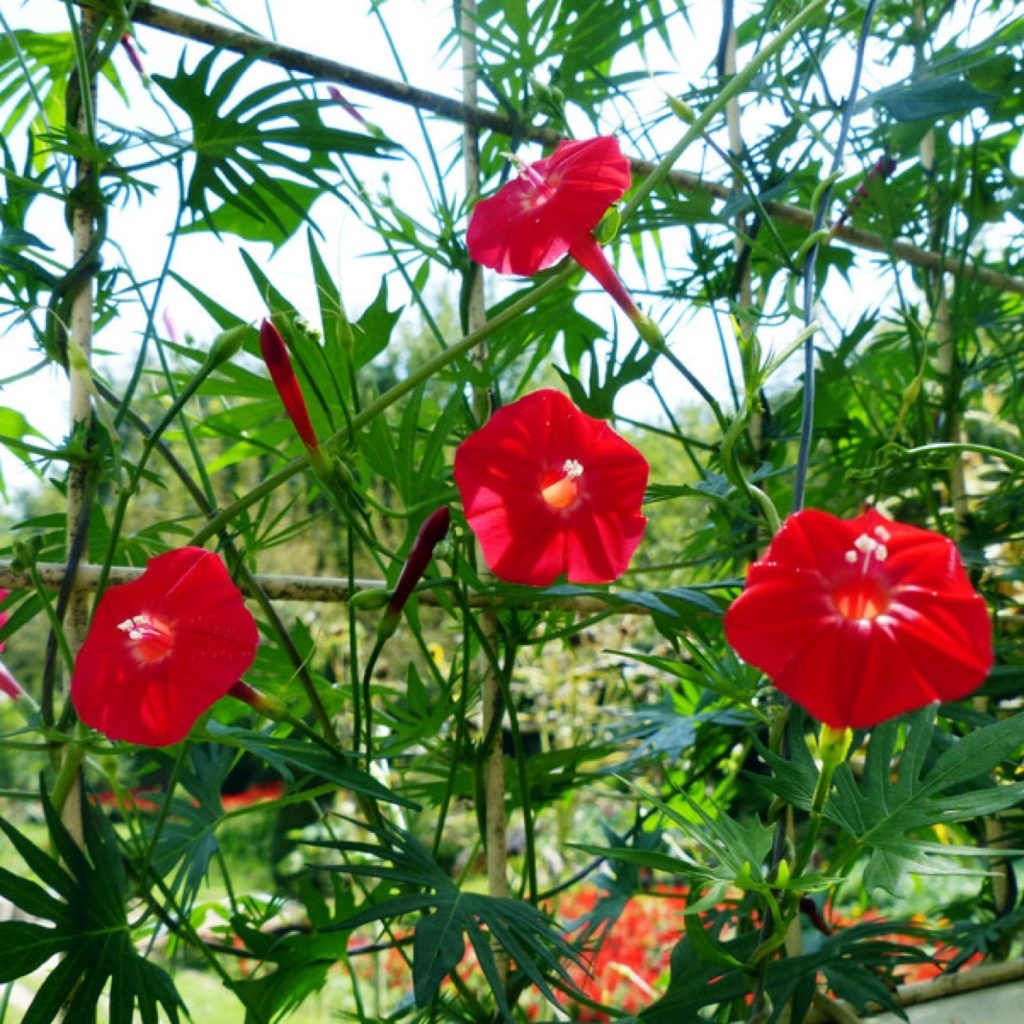
Like maple leaves with deep serrations, the fence was densely covered with foliage, but lately, enticed by the cool morning and evening breezes, the Rukosou (Rukosou) has begun to bloom cute flowers reminiscent of miniature red hibiscus. The character “縷” means slender and long, describing the characteristics of its leaves. Rukosou produces small star-shaped flowers one after another from late summer to early autumn. While its leaves thrive in the summer, it doesn’t bloom much, as it is a short-day plant and begins to flower more profusely around late August when the days become shorter. During the Edo period, Rukosou, which had just been introduced, was called “Kabocha Asagao” because of its flower’s resemblance to morning glory and its origin from Cambodia. By the way, “Kabocha” in this context is a word derived from Cambodia. Its native habitat is tropical America, where it thrives in heat, and in Japan, it quickly naturalized. There are two main types of Rukosou: the featherleaf Rukosou and the roundleaf Rukosou, with the red-leaved Rukosou differentiating from the featherleaf variety. The photo depicts the red-leaved Rukosou. Apart from red, there are also pink and white varieties of Rukosou, and they will continue to bloom more and more as we head towards the end of autumn.
深い切れ込みのあるもみじ葉のような葉が柵いっぱいに茂っていましたが、このところの朝晩の涼風に誘われて、ルコウソウ(縷紅草)が赤いハイビスカスを小さくした様な可愛い花を咲かせ始めました。「縷」は細長いと言う意味で、葉の特徴を表しています。ルコウソウは星型の小さな花を夏の終わり頃から秋にかけて次から次へと咲かせます。夏は葉がよく茂りますが、あまり花は咲かず、短日植物なので日が短くなった8月下旬頃からよく花を咲かせるようになります。江戸時代に入ってきたルコウソウは、当時は朝顔のような花であることと、カンボジアから来た花であることから、「カボチャアサガオ」と呼ばれていました。ちなみに、このカボチャは、カンボジアが「カボチャ」と転じた言葉です。原産地は熱帯アメリカで暑さに強く、生育旺盛で、日本では早くから野生化していました。ルコウソウは葉の特徴から羽衣ルコウソウと丸葉ルコウソウがあり、羽衣ルコウソウから紅葉葉ルコウソウが分化しました。写真は紅葉葉ルコウソウです。赤以外にもピンクや白のルコウソウもあり、これから秋の終わりにかけてどんどん花を咲かせます。
